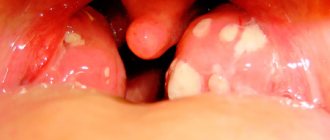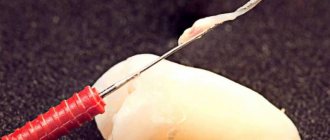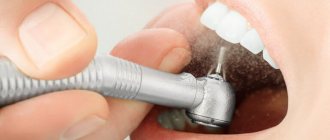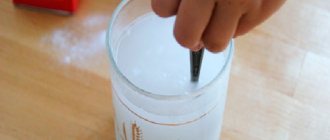Household blue is considered a mixture of dye and starch, sold in powder or liquid form. The substance is usually used as a bed linen freshener. Linen bluing allows you to make linen and cotton shirts white. It is also used for tinting materials. More details about this tool are described in the article.
Blue for linen is divided into 2 types: with soluble and insoluble dye. The second option is considered cheap; it is used only when refreshing products. Soluble - for dyeing clothes.
Choice
Painting with this product should only be carried out on suitable materials. It must be taken into account that:
- Blue for laundry must be water soluble. Then you will get a uniform color - insoluble ones make streaks when used in a concentrated manner.
- Powder and liquid should be diluted with water until dissolved before use.
- The substance is used for washing and rinsing. If you need coloring, it is advisable to choose a special product.
- The product is used to dye white materials and refresh blue fabrics. Dark colors do not change, but other light colors may produce unexpected results. The substance is typically used in updating jeans.
- Linen bluing can dye natural fabrics.
Dyeing clothes using natural means
If you prefer to use natural products when dyeing clothes, then the following ingredients are what you need!
- Turmeric: The spice makes your clothes shine bright yellow.
- Spinach: Adds a touch of soft greens.
- Blackberry: Depending on the base tone, it turns out red or pink.
- Sea buckthorn: bright orange.
- Wormwood plus alum: lemon.
- Beetroot: from rich burgundy to soft pink.
- Henna: from red to red.
- Coffee, tea: from beige and cream to brown.
In order to prepare a dye from natural ingredients, first grind the raw materials and simmer them over low heat for half an hour. Approximate ratio: 200 grams per liter of water. Then you will need to strain through several layers of gauze - the natural paint is ready!
Procedure
How is blue linen used? The instructions will allow you to perform the procedure correctly:
- Dilute the substance according to the instructions. There should be no clots of coloring agent left in the water; it should be uniform in color.
- The bath needs to be filled with water.
- Then you should lay out your clothes in the bathroom. Uniformity is necessary so that when dyeing you get one color. The water should cover the item. For a slight bluing, a few minutes are enough, and for coloring from 1 hour. For jeans you need 2 hours.
- Then the item must be dried flat.
Compound
What is the composition of blue for linen? It is a sodium aluminosilicate containing sulfur and sodium sulfate. In the USSR, grade 1 and grade 2 products were sold, which differed in intensity and shade. The blue should dissolve easily in water. Because of its lightness, it does not stay at the bottom for long. The composition of the Soviet product excluded the presence of organic dyes, Prussian blue and soot.
Using the washing machine
If allowed, bluing for washing clothes can be used in the washing machine. You can also do coloring. The work is performed in the following sequence:
- You should check whether there are any dense lumps in the liquid dye, and the powdered dye should be diluted with water. Grains of sand can ruin clothes and leave bright stains on them.
- The product is added to the drum of the machine. If the instructions say to add soda or salt, then do so. This is required to fix the color.
- You need to choose an intensive wash if the fabric is thick. And the temperature is 90-95 degrees. The cycle is long.
- Do not use washing powders, rinse aids and other products.
- After washing, jeans should be placed in a basin to soak in vinegar, which will fix the color.
- To prevent other clothes from getting dirty, the car is turned on at idle speed and then wiped from the inside. It is advisable to add a small amount of bleach to the powder compartment.
When using blue, you need to consider that:
- A quality product will not stain your hands or bathtub. If traces of it remain, there is a possibility of damage to the item.
- Blue is not considered a permanent dye - it fades with each wash, so repeated procedures are required. For lasting results, you need to use special paints for materials.
Each item needs to be processed separately if you want to get an excellent result. It is necessary to adhere to the rules of the procedure, observing the time period for painting.
The dyes have good resistance to external factors, so you can safely wash them. But you should not prolong the procedure or change the temperature. It is advisable to wash the item by hand with water at 40 degrees. Thus, blue can be used to color things. It is usually used for jeans. Even an old thing takes on a new look.
In order to eliminate the yellowish tint on linen, it is necessary to turn it blue.
The laundry turns blue during the last rinse.
Remember that when washing cotton fabrics with soap, bluing is not desirable.
The method of using bluing agents is very simple: tie an incomplete teaspoon of paste-like bluing, 1-2 tablets or a bag of powder in a piece of clean white cloth and “blue” cold water in a “knot”. Then dip the washed and rinsed laundry into it for a few seconds.
When using liquid blue, prepare a bluing solution at the rate of 3 - 4 drops of the drug per 1 liter. water.
When washing in a machine, the blue is dissolved directly in the detergent solution poured into the tank.
In order for ultramarine to give an even color without stains to things, regardless of the fabric, you do not need to blue them all at once.
It is better to blue each item separately, keeping it in the solution for the same amount of time.
Washing methods
The curtains can be washed either in a machine or by hand. Remember that jewelry in the form of muslin, ribbons, and fringe do not like automatic washing and can be hopelessly damaged. But dense fabrics, curtains made of polyester and viscose feel good in the drum. Hand washing is more gentle, but old tulle curtains cannot be tidied up this way.
Manual
It would seem that this is the most basic way: pour water, throw in a handful of powder and, with physical effort, wash the item. But not everything is so simple, since you need to wash tulle wisely. To achieve the result, the following actions are required.
- Soak. Make a saline solution, add any detergent and soak the tulle in the liquid. If it is not too dirty, then two to three hours will be enough, otherwise you can leave it overnight. Before washing, you need to rinse the curtains in several waters.
- Wash. Wash in warm water using a suitable detergent. If you take powder, first dissolve it in water. But to brighten the color, you can pour in a little vinegar. Lather the water well, then add the tulle there. Foam is the product that perfectly washes delicate fabrics. Remember the curtains in the water. No need to squeeze or rub too hard - this is unnecessary.
- Rinse . Pour clean water. Add some blue. Dip the curtains and rinse them gently. Thanks to the blue, you can wash the tulle from grayness - the curtains will acquire a barely noticeable shimmer and freshness, as if you had just bought them.
Machine
Activator-type machines are not suitable for such things, so it is best to wash tulle in an automatic washing machine. To prevent the curtains from being damaged, you need to use a special bag, which is what it’s called: for washing delicate items. If you don't have one, fold the tulle into a clean white pillowcase. What's next? Follow the following five-step procedure.
- Place the tulle in the drum of the machine.
- Pour gentle detergent and tulle bleach into the special compartments (it does not contain chlorine).
- Select the “delicate”, “gentle”, “neat” mode (each machine has something similar). The cycle should be the smallest that the programs offer.
- Turn on the “extra rinse” option.
- Turn off spin or select the lowest speed available.
If you do everything correctly, then at the end of the wash you will get clean and fresh curtains without making any special efforts - the machine will do everything for you.
ADVIСE
When turning laundry 1 liter. You can add 4 tbsp of blue water. spoons of vodka and 1 teaspoon of turpentine (6 oil will become 6 oil).
When washing cream-colored lace and tulle curtains, instead of bluing, it is better to use an infusion of tea or coffee filtered through a thin fabric.
Openwork curtains not only add individuality and comfort to the home, but also show the taste of the housewife. Sometimes women refuse such beauty, replacing tulle with blinds. They explain this by their busyness, since bleaching tulle at home is troublesome. But in reality, this is not a problem at all.
Tulle is sewn from various fabrics, but always very soft and airy. Silk, viscose, polyester, nylon, cotton and even wool are suitable for such delicate work. Wool is woven into an openwork, thin veil.
Tulle made of nylon and polyester is considered the most durable. As for care, artificial fabrics are the best to wash, but this must be done very carefully - if the temperature is not maintained, the fabric turns yellow. Only delicate mode or hand washing will help.
Choosing paint for dyeing clothes
We live in an age of abundance. The chemical industry offers such a rich assortment that it can be difficult to decide what paint to paint clothes with. It is simply not possible to define all types of dyes in one article. Therefore, we will limit ourselves to a list and a brief description of the main types of things used to paint things.
- Aniline - recommended only for dyeing products made from natural fibers.
- Oil ones are the most difficult to use, but with guaranteed and long-term results.
- Acrylic - can be used not only for cotton, but also for silk fabrics.
- Water-glycerin - used to obtain radical dark shades (for example, black or dark blue).
Do I need to rub, twist, iron?
Before making the tulle snow-white, you need to prepare for this process according to all the rules:
- shake out the cloth to remove dust;
- stop using chlorine-containing products;
- temperature for washing tulle - no higher than 40°C (hot water will ruin the fabric, and cold water will not cope with dirt);
- the best detergent for washing is liquid;
- if you use powder, it must first be dissolved;
- the fabric does not need to be rubbed;
- so that the curtains are without folds, they are not twisted;
- do not dry the tulle in the sun - you will get a yellow color;
- To iron the tulle after washing, you don’t need to take an iron: you just need to hang wet curtains on the curtain rod.
Using blue for linen
More effective coloring and refreshment of natural linen can be achieved thanks to the instructions for use of this drug. In the description, pay attention to the procedures in which this substance is used. Certain types of blue are used during washing, some varieties - during the main or final rinsing or soaking process.
It doesn’t matter whether you are going to dye clothes or simply turn your linen blue, the main thing is to use a material based on natural cotton or linen fibers. In order to ensure the quality of the product and its correct dilution, you can initially experiment on a small piece of fabric.
Most often, classic shades of jeans, blue and light blue underwear, and less often white fabric are dyed blue. In order to get a good tinting result, use water-soluble bluing for rinsing. Insoluble may give unwanted divorce). Before use, dry or liquid coloring pigment is thoroughly dissolved in water until a uniform color without clots is obtained. To obtain an ideal solution, the liquid is often filtered through several layers of gauze.
The dyeing process should only be done with clean, washed and rinsed laundry. If the item is large enough, it is best to paint it in the bath. The container is filled with water so that the water completely covers the material. The dye solution is poured into the bath, and the color scheme is regulated by both the concentration of the solution and the volume of water in the vessel. The linen is lowered into the bathtub in a straightened form without folds or bends and kept for a certain amount of time. Good color fixation is achieved after 1-2 hours, but in the instructions for use you can find a more detailed description of the ratios of types of fabric and tinting time. After this, the item is rinsed in plain water or water mixed with vinegar and hung flat to dry.
Selection of household chemicals: 3 options
In hardware stores you can buy products created specifically for fabrics that require careful handling. They are safe and do their job quite well. They are good because they contain bleach and even “starch.”
Three types of “washing agents” allow you to restore the whiteness of tulle.
- The simplest powder. Both “automatic” and “manual” will do. They can be used if you need to bleach nylon tulle, or when at home there is a struggle for the freshness of organza or cotton curtains.
- Baby powder or gel. They contain special bleaching elements that protect the fabric from thread disintegration.
- Shampoo for fabrics. Prevents deformation of delicate products, cleans efficiently, but carefully.
What fabrics can be dyed?
In principle, you can dye any fabric with your own hands. But, of course, subject to certain conditions. However, you should know that not every fabric modulates color equally well. Thus, the intensity of staining may vary. It is important to note:
- You should always refrain from dyeing synthetic fibers such as polyester.
- Fabrics containing 60 percent or more natural fibers can be dyed easily and without problems. These include cotton, viscose, linen, satin, chintz, etc.
- The seams of clothing are most often made of synthetic threads. They absorb color with difficulty or not at all and therefore, in most cases, retain their original color. There may be a clear contrast. Before you paint things, pay attention to this.
How to bleach tulle: 6 options
As long as the curtains are new and fresh, they look quite attractive. But time and repeated washing cause the tulle to turn yellow or gray. And kitchen curtains generally become covered with greasy stains. It is in such cases that you need to not just wash the item, but bleach the tulle curtains. There are several proven methods for this.
Yellowness is easily washed off in a saline solution. The stronger the solution, the more likely it is that the curtains will take on a snow-white appearance.
- Take 100 g of salt and mix with powder 1:1.
- Dissolve the mixture in a liter of warm water. Need more water? Then increase the amount of salt and powder proportionally.
- Immerse the tulle in the liquid.
- Leave for a while (the longer the better, but at least three hours).
- Rinse, wash.
Blue
Despite the fact that bluing is becoming increasingly difficult to find today, it is one of the most effective methods for bleaching tulle. Wash the curtains first, and then do the blue rinse.
- Take 0.5 teaspoon of blue for 10 liters of water.
- Stir the product well so that there are no lumps, otherwise they will leave unsightly marks on the fabric.
- Dip the tulle into the solution several times.
- Rinse.
- Don't squeeze, let it drain.
Zelenka
This product will help put the tulle in order, but you need to act very carefully here, since undissolved brilliant green will simply ruin the thing.
- Add ten drops of brilliant green to a glass of water and stir.
- Wait until completely dissolved.
- If precipitation occurs, it is necessary to filter.
- Pour the solution into a ten-liter basin filled with water.
- Send the washed tulle next and leave for five minutes.
- Rinse.
- Don't squeeze, let it drain.
Peroxide
A good remedy if you have cotton curtains; this method will not work for other fabrics.
- Prepare a bucket of hot water
- Pour in one tablespoon of ammonia and three tablespoons of hydrogen peroxide, stir.
- Place the washed tulle in the resulting solution for 30 minutes.
- Rinse.
- Don't squeeze, let it drain.
Potassium permangantsovka
Potassium permanganate also received good reviews as a curtain bleach.
- Rub a bar of laundry soap.
- Dissolve a few grains of potassium permanganate in a glass of water.
- Mix soap and potassium permanganate with water prepared in a basin for soaking the fabric.
- Place the tulle in the resulting composition for 30 minutes.
- Rinse.
- Wash it.
- Don't squeeze, let it drain.
Digestion
Boiling will help remove kitchen tulle from greasy stains and heavy dirt. The method is old, but effective. However, it is only suitable for curtains woven from thick threads.
- Pour water into an iron basin and add your favorite laundry detergent.
- Place on the fire and place the tulle there.
- Wait until the water boils, and then, stirring, boil the curtains for 40-60 minutes.
- Rinse.
- Don't squeeze, let it drain.
How to dye jeans at home
The content of the article
Every year, fashion designers create a certain trouser design that instantly flies around most countries of the world. Blue or “washed” jeans, decorated with rhinestones, sequins, and beads, are approved by the majority of the fair sex. The pricing policy varies depending on the decor and the original shade, as a rule, it is quite high. In order not to spend hard-earned money, many girls resort to home dyeing, which helps restore the original color of jeans.
Methods for dyeing jeans
- Blue. The first place rightfully goes to blue, it is one of the more affordable preparations and fits perfectly on fabric. Short-term durability is considered a negative characteristic of coloring. The composition is washed out of the fiber structure almost after the first wash. If you prefer this method, be prepared for the fact that the color of your trousers will have to be regularly updated.
- Powder. Free-flow dyes are very popular because they can be poured directly into the washing machine. During wet processing, the color of the fabric is renewed. A negative feature is that powder dyes have a fairly small range of colors.
- Potassium permanganate. The dyeing technology requires attention to detail; the method is not considered simple. However, in the end you will be able to get everyone’s favorite “varenka”, which occupies a leading position in the fashion world.
- Acrylic. Dyes based on this type are considered super-resistant; thanks to the unique composition, jeans can be washed in a household machine and even boiled. After final drying, the painting with acrylic paints ceases to react to external factors, which is an undeniable advantage.
- Special composition. A gel or suspension can be purchased at a hardware store to change the original color of denim. The disadvantage of this method is the high pricing policy, the advantage is the long-lasting effect. An analogy to technology is the use of hair dye as a means of updating the color of trousers.
how to quickly dry jeans after washing
How to dye jeans in a washing machine
- Select the coloring powder of the desired shade, dilute it according to the instructions. As a rule, at 45 gr. product is 0.5 liters of water.
- After dilution, stir the solution with a spatula until the granules are completely dissolved, making sure there are no lumps.
- Next, add 15 grams to the solution. chopped salt and 10 g. soda, stir again. Such components are needed to maintain color; they are added to the powder if there are manufacturer’s recommendations.
- Place the jeans in the machine and set them to the longest wash cycle (about 2 hours). Usually, the processing function for cotton and linen is suitable, as long as the temperature is at least 90 degrees.
- Pour the dye solution into the special compartment and wait until the cycle completes. After this, take out the jeans and start preparing the soaking mixture.
- Pour 5 liters of water into a basin, add 325-350 ml. table vinegar (concentration 6-9%). Place the trousers in the container and wait a quarter of an hour.
- Rinse the jeans with your hands, then put them in the machine again, set to the shortest wash (20-30 minutes) at a temperature of 35-40 degrees. Be sure to add powder to remove excess paint.
Important! During subsequent washes, treat jeans separately from light-colored laundry. After washing your trousers, set the machine to double rinse and add bleach or bleach to remove the pigment from the drum cavity.
how to make ripped jeans at home
How to dye jeans in a pan
- Choose the optimal container in which to dye your jeans. An enamel pan with a thick bottom and walls or a bucket will do.
- Dilute the powder dye according to the manufacturer's recommendations, stir until the crystals dissolve. Add soda and salt if the instructions require it, then proceed with the procedure.
- Pour 8 liters of water into a pre-selected container, add the prepared pigment there, and mix thoroughly again. Place the bucket/pan over medium heat, bring the solution until the first bubbles appear, then reduce the power to low.
- Place the jeans in a container, press them down using tongs or a wooden spatula, and boil for 1 hour. Stir the solution periodically and turn the trousers over so that they are colored evenly.
- After the specified period, wait until the solution cools at room temperature, then remove the jeans from the container with tongs. Rinse them by hand.
- Prepare a solution by mixing 5 liters of water with 300 ml. vinegar, soak jeans in the mixture, wait 20 minutes. After that, wash them in a machine at 40 degrees, add conditioner and powder.
how to stretch jeans at home
How to dye jeans blue
- It is important to understand that bluing is suitable for short-term dyeing. It doesn't give the jeans a completely new color, but just makes them an order of magnitude bluer. The pigment is washed out after 2-3 washes.
- The ineffectiveness of the method is easily offset by the relative simplicity of the procedure. Prepare the blue solution strictly according to the instructions, soak the trousers in the resulting mixture, leave for 3-4 hours.
- Do not forget to stir the mixture periodically so that the trousers are stained evenly. After the specified time has passed, begin preparing the soaking solution.
- Dilute table vinegar in a basin and rinse your jeans in it. Repeat the procedure until the water turns light. Replace the old vinegar solution with a new one as you use it.
How to dye jeans with potassium permanganate
- Every year, the so-called “washed jeans”, which came to us from the 80s, are gaining more and more popularity. A similar effect can be achieved using the well-known potassium permanganate.
- A positive feature of the technology is considered to be the complete absence of boiling; coloring is performed without heat treatment.
- To create a “varenka”, prepare 80 grams. potassium permanganate (potassium permanganate) and 135 ml. table vinegar with a concentration of 6 to 9%. You will also need a 3% hydrogen peroxide solution in an amount of 30 ml.
- Mix the listed components into one composition, dilute with water in a ratio of 2:1. Twist the jeans with a rope and secure with white elastic bands.
- Place the trousers in the solution and leave for 20 minutes. Every 5 minutes, “drown” the product in the mixture so that it does not float. After the specified period, remove the jeans.
- Rinse them by hand, then put them in the machine for a double rinse. Add gel powder and fabric softener.
It is not difficult to dye jeans if you have sufficient knowledge regarding the available methods. Carry out the technology using potassium permanganate; purchase a special powder at a hardware store to change the color of the fabric. Decorate the trousers with acrylic paints, giving them the desired design. Consider dyeing with special gel pigments that are designed for denim.
how to whiten jeans
Video: how to dye jeans
howtogetrid.ru
Starch: the final stage
The last step left is to starch the tulle at home. This will give the sheer curtains shape and extra shine.
- Dissolve 250 g of dry starch in a bowl of water (about 10 liters), mix well until smooth.
- Soak the washed curtains in the solution for five hours.
- Take it out of the water.
- Don't squeeze, let it drain.
There are many ways to quickly bleach tulle at home. If you are not satisfied with one method, try another. Do not forget and do not be lazy to wash the tulle, as dust collects in it, causing respiratory diseases. The health of all family members depends on the cleanliness of your apartment.
What is Methylene Blue used for?
Methylene blue is a synthetic blue dye. Its solutions are used to get rid of fungal infections in home aquariums, causing, in particular, diseases of aquarium fish such as ringworm and branchiomycosis (gill rot).
Interesting materials:
Why did the brine of milk mushrooms turn black? Why do Indians wear feather headdresses? Why does a cactus have many babies? Why does the top of the bread fall off? Why do larch needles fall off? Why does Lucifer have white wings? Why is the honey spoon shaped like this? Why don't jellyfish have brains? Why does my monitor go blank? Why is my cat meowing?











